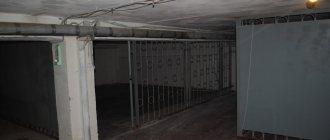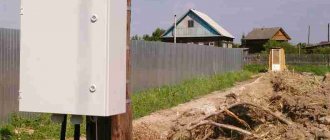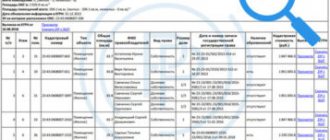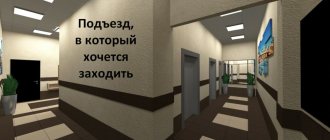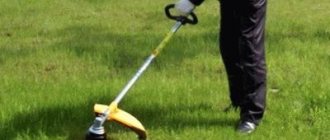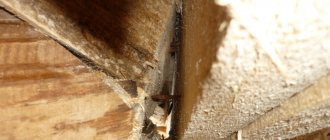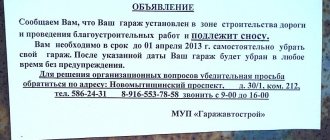Sanitary standards that apply to all types of residential buildings were registered and came into force in 2010. Previously, it was necessary to rely on separate sanitary rules and reporting standards (SanPiN), which were not effective in cases where it was necessary to inspect residential premises in the complex. Now you can be guided by a single approved document, the text of which contains detailed conditions and requirements for the safe and comfortable living of citizens in apartment buildings.
Nowadays, it is customary to refer to and be guided by the new SanPiN during construction, design and architectural work, as well as repairs of residential buildings. A single document regarding SanPiN regulates such issues as:
- Conditions for ensuring the residence of persons in completed and planned residential premises of apartment buildings;
- Standards that must be observed when settling citizens in these premises, taken into account when designing the building;
- Requirements for the process of reconstruction of houses;
- Rules and regulations that must be followed before construction begins;
- Requirements for the operating company.
It should be noted that the mentioned sanitary rules and reporting standards (SanPiN) do not apply to real estate such as hostels, hotels, as well as houses with special purposes (orphanages, rotational camps, homes for the disabled).
SanPiN for apartment buildings
SanPiN for multi-apartment residential buildings establishes rules for the use of premises by residents . They must properly comply with the established rules, since they live in a society where many other people live besides them. In general, the standards apply to all residential premises: both multi-apartment and private.
Sanitary standards and rules relating to residential premises are indicated:
- in the Housing Code of the Russian Federation;
- in Federal Law No. 52 “On the sanitary and epidemiological welfare of the population”;
- SanPiN 2.1.2.2645-10 “Sanitary and epidemiological requirements for living conditions in residential buildings and premises.”
Norms are established for everyone on equal terms without any targeting . They apply to all individuals and legal entities involved in the design or construction of buildings, their maintenance, their operation, and carrying out sanitary control.
They include provisions on the rules of construction, cleaning of local areas and garbage, the use of water supply, lighting and heating, and fire safety rules.
Sanitary rules for apartment buildings and private buildings do not apply to places of temporary residence - shelters, hotels and dormitories.
The administration of the locality controls the implementation of sanitary rules . Moreover, according to the law, it is not obliged to conduct any inspections. She works only with applications received to her regarding violations of sanitary maintenance standards for premises.
In accordance with SanPiN, housing must be operated as a residential premises, it is forbidden to store harmful and flammable substances in it, or litter public areas. The management company must monitor the condition of the house, remove garbage, maintain communications and poison pests.
Local areas
Sanitary standards for adjacent areas of apartment buildings ensure the protection of the interests of all residents who equally use these facilities. Unfortunately, many of these rules are constantly violated in reality.
The sanitary requirements for the arrangement of the local area include:
- Providing illumination of the yard with lanterns.
- The zoning of the local area must be observed in the yard: parking area, playground, pedestrian path, sports ground.
- The entry of special vehicles must be ensured: police, ambulance, fire.
- Cars cannot be washed or repaired in the yard.
- The area must be cleaned, cleared of snow, and the grass must be trimmed.
- Trees should be planted at a distance of 5 meters from the house.
Shrubs should be planted in the yard at a distance of 1.5 meters from the house, with a height no greater than the height of the bottom of the first floor windows.
At the same time, in any yard you can see a car parked on a footpath or on the grass, or a person repairing his car under the window.
Heating, water supply and sewerage
There must be heat in residential apartment buildings; it is supplied by special services during the cold season and turned off during the warm season. The rules for organizing heating are regulated by SNiP 23-01-99, 31-01-2003, as well as GOST 30494-96.
Heating requirements can be expressed as follows:
- Heating systems should not create noise.
- Heating devices must be fenced off.
- There should be no odor from heating devices in the premises.
Ventilation of air between rooms is prohibited.
The optimal microclimate in a residential area has the following temperature values: in living rooms +20 degrees, in the kitchen +18 degrees, in the bathroom +25 degrees, in the corridor +16 degrees.
Drinking and process water channels in premises should not be mixed. It is forbidden to install sewer pipes on the ceiling under living rooms.
Lighting, noise and insulation
There are also special requirements for lighting in residential areas. A person’s eyes may not be able to cope with poor lighting, resulting in visual acuity being affected.
In residential buildings:
Street lights should work in the evening and at night, and a lantern should always hang above the entrance.
When buying apartments instead of apartments today, citizens are faced with the fact that sanitary standards are not observed in such premises. There may be no windows in the living rooms, there may not be enough parking spaces for the entire house, and a new high-rise apartment building could easily be built near the house.
SanPiN for noise in residential buildings (2.1.2.1002-00) sets the limit values for noise, vibration and ultrasound.
The permissible noise levels in residential premises are as follows:
- from 7 am to 11 pm – 40 dB with an excess of 15 dB;
- from 11 pm to 7 am – 15 dB.
Residential buildings located near highways must additionally be sheathed with soundproof material.
Noise can arise from the operation of the heating or sewer system, from neighbors, from roads and nearby factories. Even proximity to a hospital equipped with a helipad can create trouble. The constantly arriving air ambulance helicopter creates noise both day and night.
Garbage and cleaning
Sanitary standards for cleaning entrances in an apartment building stipulate that cleaning activities must be carried out regularly.
The work schedule is as follows:
- Sweeping stairs and cleaning elevators - daily.
- Mopping floors – 1 or 2 times a month.
- Cleaning the area near the entrance - once a week.
- Cleaning windows, walls and heating appliances – once a year.
Garbage must also be collected daily on weekdays and on weekends and holidays as needed. Moreover, it should not matter whether there are garbage chutes in the entrances or whether the garbage is taken out into street containers.
For those buildings equipped with a garbage chute, the following rules apply:
The distance from garbage containers to a residential building should not exceed 100 meters, from children's playgrounds and recreation areas - at least 20 meters.
There must be at least 1/3 of the number of apartments in an apartment building. They should be located at a distance of 10 meters from the entrance, 5 meters from garbage cans and 2 meters from sidewalks.
The legislative framework
Today, modern technologies and high-quality building materials, as well as special equipment, are used for the construction of private and apartment buildings. Today, modern houses are high-tech engineering structures that have nothing in common with ancient dwellings.
The more technologically advanced the building, the more carefully it is necessary to control the main parameters and characteristics. To systematize and take into account all norms, Sanitary Regulations were introduced.
The main characteristic that determines the convenience of living is the microclimate parameters in the room. The room temperature should always be within normal limits. Otherwise, living in an apartment will be uncomfortable or even dangerous. In Russia, this norm is often not observed, since the ambient temperature changes very quickly.
The temperature in the rooms should be 18 degrees and in the bathroom 25 degrees. These parameters must be observed in all residential premises. If the temperature regime is not observed, you can demand a reduction in heating fees. In addition, it is necessary to ensure air exchange in the living room (three cubic meters per hour per square meter).
SanPiN for private houses
Sanitary standards during the construction of a private house and its operation must also be observed. A private house is an individual residential building with a plot of land. There are also neighbors there, people living nearby.
Therefore, it is also impossible to commit lawlessness there. The norms and rules of hygiene and operation of premises must be observed in the same way as in residential apartment buildings.
The following rules apply for private houses:
Management company rules
Management companies enter into service agreements with residents and premises owners. The terms of such agreements may contain additional rules for living in the house.
The rules of residence in apartment buildings established by management organizations and homeowners associations should not contradict the norms of housing legislation, as well as other federal and local regulations.
The compliance of management organizations with the requirements of the law is monitored by the local department of housing supervision, as well as members of the control commission of the home HOA.
Read more: Information about road accidents by incident number for free
As a rule, management companies require residents to:
- compliance with the rules for using parking lots managed by the management company;
- compliance with requirements for the use of common areas;
- compliance with deadlines for payment of fees and utilities;
- payment for major and current repairs of an apartment building.
If the management company was involved in the management of the house under an agreement with the local HOA, then the members of the HOA can demand that the management company include the requirements of the majority of residents in the list of rules for using the house . For example, the charter of a number of management companies introduced a rule to maintain silence at certain periods of time - from 12.00 to 13.00, due to the need to ensure peace for families with small children.
If guarded parking is organized on the territory adjacent to the apartment building at the expense of residents, then the management company has the right to determine the rules for using such parking and paying monthly security fees.
What is the penalty for violating the rules?
Violation of sanitary standards in an apartment building entails bringing the guilty person to justice. Complaints can be submitted to the building management or administration, and, if necessary, even to the court.
When disputes arise between neighbors in the private sector regarding the location of fences, sewers or other objects, the procedure should be as follows:
- a statement is drawn up with the reason for the dispute and with reference to the violated SanPiN norms;
- Documents confirming the validity of the identified violations (photos, witness statements, technical documents for houses) are attached to the application;
- the application is submitted to the housing commission of the locality administration;
- If after 40 calendar days no response is received, you can file an application with the court.
The person guilty of violating SanPiN faces an administrative fine or a ruling requiring the transfer or destruction of the disputed object.
For example, for violating noise standards in an apartment, the guilty person faces a fine of 500 to 1000 rubles . Legal entities that violate sanitary standards will have to pay a fine of 10 to 12 thousand rubles. In addition, in 2020, administrative suspension of activities may be applied to them for up to 90 days.
In addition to an administrative fine, citizens may also be subject to a warning. Sometimes it is enough to eliminate the subject of the dispute to solve the problem. For example, one neighbor needs to remove her personal belongings from the vestibule in order to stop a conflict with another neighbor, without leading to fines and visits from the fire inspector.
In private homes, disputes usually arise due to an incorrectly located fence, which unlawfully encroaches on part of a neighbor’s land plot. Such cases are usually heard by the courts.
The injured party can also seek help from Rospotrebnadzor or the Prosecutor's Office.
Sanitary standards for the construction and operation of residential premises apply to apartment buildings and private buildings. They concern the rules for the operation of apartments and houses, adjacent areas, communications and public facilities.
The person guilty of non-compliance with sanitary standards must bear administrative responsibility in accordance with the norms of current legislation.
Knowledge of SanPiN for residential apartment buildings and the use of this knowledge to protect your own rights will ensure comfortable and safe living in your home. These rules are enshrined at the legislative level, signed by the chief sanitary doctor of the Russian Federation on August 24, 2010, and are called “Sanitary and epidemiological requirements for living conditions in residential buildings and premises.”
To implement these requirements, as well as in case of their violation, a citizen has legal grounds to contact local authorities with a corresponding complaint. These standards apply to both individuals and legal entities, including those who design and build residential premises. Let's look at these requirements in more detail.
Dear readers! Our articles talk about typical ways to resolve legal issues, but each case is unique.
If you want to find out how to solve your particular problem, please contact the online consultant form on the right or call +7 8
It's fast and free!
Smoking
The restriction of smoking in public places is regulated by the provisions of Law No. 15 “On the Protection of Citizens’ Health...”. According to paragraph 1 of Article 12 of Law No. 15, smoking in an apartment building is prohibited in the following premises:
- entrances;
- basements and attics;
- staircases;
- children's playgrounds;
- elevators;
- premises and offices of the HOA.
Smoking is allowed only in personal apartments and rooms, as well as in designated smoking rooms built on the territory of the residential complex.
Smoking rooms in apartment buildings must be built taking into account fire safety requirements and equipped with special ventilation hoods.
In most cases, smoking may also be prohibited on the balconies of private apartments if neighboring residents apply to the housing inspectorate and prove the penetration of tobacco smoke into their apartments.
Read the story about how a family received compensation from a neighbor for smoking on the balcony: link.
If the house has corridor-type dormitory rooms, then the corridors and kitchens, as well as shared showers and toilets, are considered to be common areas, and smoking is prohibited in such places.
Watch the video on how to deal with a smoking neighbor:
What sanitary standards and rules exist for residential premises?
Sanitary standards and rules for residential premises established by Russian legislation are designed to protect citizens living in their apartments. All rules and regulations are divided according to their area of responsibility.
In this regard, the following subcategories of norms are distinguished:
- on lighting;
- plumbing system;
- drainage system;
- heating;
- ventilation ducts;
- electrical wiring;
- number of floors of a residential building;
- fire resistance;
- emergency exits;
- location of garbage containers;
- security of the local area;
- the plot on which the house is located, etc.
Categories of standards regulate each zone in the room to create comfort and safety in the home.
Note. There are separate standards for hotels, hostels, homes for the disabled, shelters and rotational camps.
Basic requirements for the maintenance of premises and the house as a whole
Premises intended for people to live in, in terms of area, layout, lighting, microclimate, air exchange, noise levels, vibration, various electromagnetic radiation, must comply with sanitary and epidemiological requirements in order to ensure safe and harmless living conditions in it, regardless of the age of construction.
If a dwelling does not comply with sanitary rules, it is considered unfit for human habitation.
There are a number of prohibitions when using residential premises. Forbidden:
- use residential square meters for purposes that do not comply with the design documentation;
- store and use hazardous chemicals that pollute the air in residential and public premises located in a residential building;
- perform work that exceeds the permissible levels of noise, vibration, and environmental safety of premises;
- litter, pollute and flood premises in a residential building, incl. and public use - basements, attics, landings, etc.
During the operation of residential premises at home, it is necessary to be vigilant and take timely measures:
- troubleshooting engineering and other equipment located in residential premises - water supply, sewerage, ventilation, heating, waste disposal, elevator systems and others;
- to prevent the occurrence and spread of infectious diseases associated with the sanitary condition of a residential building, to exterminate insects and rodents.
Requirements for residential premises
The law establishes basic requirements for residential apartments, compliance with which is mandatory for everyone who operates residential premises.
Spaces intended for human habitation cannot be located on the ground or basement floors. At this level, it is allowed to place parking lots and garages with special equipment for walls and air exchangers. Storage rooms are also provided.
When designing apartments, it is prohibited to place a bathroom and toilet above the living room or kitchen.
Note. The exception is two-level apartments; they are allowed to place bathrooms or toilets above the kitchen.
The regulations also regulate the location of the entrance to the toilet room. It is not allowed to enter the restroom from the kitchen or living room.
High-rise buildings above five floors must have an elevator.
Important. The elevator must be of such dimensions that it can transport a person on a stretcher or wheelchair.
Sanitary standards for residential buildings prohibit the location of the engine room and elevator shaft, garbage chute, electrical panel above or below living rooms or adjacent to them.
Hygienic and sanitary standards for the maintenance of local areas
The land plot on which the construction of a residential building is planned must meet the following conditions:
- be located outside the industrial and sanitary zone;
- meet the requirements for the content of chemical and biological substances potentially hazardous to humans, the quality of atmospheric air, the level of ionizing radiation, physical factors (noise, infrasound, vibration, electromagnetic fields), etc. in accordance with the sanitary legislation of the Russian Federation.
Hygiene requirements
Important!
It is forbidden to plan or place residential premises on the ground floors and basements. . According to the rules adopted in 2010, it is allowed to place in a residential building premises of public importance, engineering equipment and utilities necessary for their operation. These premises must comply with the standards: vibration impact on residential premises, noise impact, produced infrasound and electromagnetic fields.
According to the rules adopted in 2010, it is allowed to place in a residential building premises of public importance, engineering equipment and utilities necessary for their operation. These premises must comply with the following standards: vibration impact on residential premises, noise impact, produced infrasound and electromagnetic fields.
It is permissible to place car parks in basements and ground floors (the tightness of the ceiling coverings is maintained) when they are equipped with specialized exhaust channels for vehicle exhaust gases.
If there is a public space in the house, the entrance to it should not be from the residential entrance; it should have a separate entrance. Car parking for employees should not be located in the local area. According to the rules, industrial production (sewing, repair shops) is prohibited from being located in basements and ground floors.
A residential building with a parking lot, located on the ground floor, is separated from the apartments by a non-residential floor, in which it is prohibited to place medical premises and centers for working with children.
Every house, regardless of floors, must be equipped in the basement or basement:
- Rooms for storing tools and equipment for cleaning the local area. It is mandatory to have a sink for washing hands; the area should be 3 square meters per worker.
- Equipping storage rooms is permitted. In this case, a separate entrance to these premises should be provided.
- Sewerage networks cannot be installed in utility rooms on the ground floors.
It should be noted that the rules prohibit from the courtyard side of the house, ensuring the operation of public premises (loading material, tools).
Recommended for these purposes:
- Equip lifts at the ends of the residential building.
- Lift from underground parking.
- From the side where there is no exit from the house entrances.
It is allowed not to make loading rooms if the area of public premises does not exceed 150 square meters.
Restrictions in residential apartments
The requirements of hygiene rules apply to apartments in a residential building, in which it is prohibited:
- Place plumbing units (bathroom, toilet) above kitchens and living rooms, unless the project provides for a 2-level apartment, in which case it is permissible to locate the bathroom above the kitchen.
- Attach plumbing fixtures to the internal partitions of rooms. It is prohibited to attach the pipeline to the walls between apartments.
- Arrange the entrance to the toilet opposite the kitchen or living room. It is allowed, as an exception, to enter from the bedroom when there is a second bathroom with an entrance from the common corridor.
It is mandatory to equip residential buildings over five floors with lifts (passenger, freight elevator), taking into account the evacuation of a person from an apartment on a stretcher or wheelchair. The placement of special premises for the operation of lift mechanisms above the apartment is prohibited. You cannot design a garbage chute or electrical cabinets in the rooms above or below the apartment.
Responsibility for violation of sanitary standards
For violation of sanitary legislation, disciplinary, administrative and criminal liability is established in accordance with the legislation of the Russian Federation.
Harm caused to the person or property of a citizen, as well as harm caused to the property of a legal entity as a result of violation of sanitary legislation, is subject to compensation by the citizen or legal entity that caused the harm in full in the manner established by Russian regulations.
The Code of Administrative Offenses of the Russian Federation provides for the following penalties for violation of legislation in the field of ensuring the sanitary and epidemiological well-being of the population, expressed in violation of existing sanitary rules and hygienic standards, failure to comply with sanitary, hygienic and anti-epidemic measures:
- warning or imposition of an administrative fine on citizens in the amount of 100-500 rubles;
- for officials - 500-1000 rubles;
- for persons carrying out entrepreneurial activities without forming a legal entity - 500-1000 thousand rubles or administrative suspension of activities for up to 90 days;
- for legal entities - 10,000-12,000 rubles or administrative suspension of activities for up to 90 days.
For example, in case of violation of the maximum permissible noise level in residential premises, liability is provided (Articles 6.3, 6.4 of the Code of Administrative Offenses of the Russian Federation; Article 23 of the Law of March 30, 1999 N 52-FZ) in the form of a warning or a fine for citizens in the amount of 500 to 1000 rub.
Note. If violations are detected, the case of an administrative offense is considered by Rospotrebnadzor. Thus, to protect their rights, a citizen should contact the territorial Office of Rospotrebnadzor for the constituent entity of the Russian Federation.
Thus, any violations of SanPiN entail liability in accordance with the law. The amount or type of liability depends directly on the amount of damage caused, its scale and the circle of affected persons.
What it is
Direct sanitary standards are acts of legislation adopted and approved by the competent state bodies.
The current Law of the Russian Federation “On the sanitary and epidemiological welfare of the population” establishes that these rules are generally binding for an absolute circle of persons (both individuals and legal entities), regardless of who is the beneficiary.
All residents of apartment buildings, regardless of their status, must respect the rights and legitimate interests of their neighbors and more distant residents of the building. The rules for cohabitation of persons are determined by a number of legislative acts of the Russian Federation. These include:
- Housing Code;
- Building codes;
- Sanitary regulations;
- Sanitary and epidemiological standards for premises in which citizens live.
Owners of apartments in the building or residential tenants are required to comply with all legal requirements. Relationships between residents are also regulated by laws and other documents in the field of consumer protection.
If conflict situations arise regarding violations of sanitary standards, especially if such violations lead to possible danger for other residents, the parties to the dispute may resort to the possibility of resolving it with the help of specialists from the housing inspection of the relevant administrative district.
The responsibilities of such inspections include monitoring compliance with the rules and regulations for living in apartment buildings.
SanPin for residential apartment buildings
SanPin was approved by the chief sanitary doctor in 2010. This document is the main document revealing the responsibilities for compliance with sanitary standards in residential buildings.
Local authorities monitor compliance with this particular document, which is a fundamental set of rules required to be followed.
Requirements for the site and surrounding area
Each residential building has a local area, the area of which is established by the local government when planning the settlement.
For this type of site, the requirements and conditions for compliance with SanPin are provided:
- the area near the house should not contain hazardous substances;
- the presence of dangerous microorganisms in the soil of the site is not allowed;
- vibrations of various types of origin should not exceed established noise standards;
- the territory should have the opportunity to locate playgrounds and sports grounds, plantings, recreation areas, and parking lots.
How to recognize housing as dilapidated and unsafe? See here.
To the premises
Rules and requirements for residential premises:
- pipelines and sanitary installations are mounted on internal interior partitions and apartment walls;
- in buildings with fewer than five storeys, passenger elevators and, in certain cases, freight elevators must be installed;
- it is prohibited to equip special-purpose premises with lifting mechanisms above living rooms;
- It is not allowed to locate garbage chutes and electrical cabinets in apartments.
All premises must be used in strict accordance with their original purpose. It is not allowed to store hazardous substances on the premises. All work that exceeds the established levels of noise, pollution and violates the rights of residents and other citizens is not permitted.
All attic and basement spaces, including elevator shafts and stairwells, should not be cluttered or dirty.
Residents of the house and other interested and responsible persons must take timely measures to carry out repair work on premises and engineering systems.
Interior decoration
The requirements also affect the conditions of interior finishing of multi-apartment buildings:
- harmful substances included in the finishing mixtures should not exceed the permissible level, especially if the temperature in the building may increase, which leads to evaporation;
- a sewerage system must be provided at the planning stage; if it is absent, then the residential building cannot exceed two floors in height;
- The temperature regime of sanitary facilities must correspond to the temperature of the heated residential premises.
Heating and ventilation
The established standards provide for the safe living of citizens in residential buildings. Heating and ventilation devices are responsible for such conditions.
Sanitary standards in an apartment building regarding heating and ventilation:
- the operation of the systems must be uninterrupted throughout the heating season;
- heating systems should not create foreign odors;
- air pollution is unacceptable due to fumes and substances released when heating systems;
- access to systems must be always available;
- the temperature regime in relation to contact with the walls should be within three degrees, between the room and the floor - two degrees.
If we are talking about a ventilation system, then the conditions and requirements include:
- it is prohibited to combine ventilation systems for two apartments into one;
- Combining the exhaust ducts of sanitary facilities and the kitchen is not allowed;
- Each additional room must be equipped with individual systems.
Lighting
Residential buildings must be equipped with window openings into which natural light can easily penetrate.
All premises must be equipped with artificial lighting. Buildings should be planned in such a way that sunlight freely penetrates into the premises in sufficient quantities.
Lighting systems must also be equipped in the local area. Entrances to entrances, sidewalk paths, must be equipped with artificial light, at night and during the day, by installing lanterns.
Rules and requirements for permissible noise levels:
- extraneous sounds in rooms can be created by ventilation systems and other technological devices;
- the noise level of such devices should be reduced by 5 decibels;
- houses located near roads with windows facing that direction are recommended to install double-glazed windows to help reduce noise from outside;
- the level of extraneous sounds takes into account the sources of origin, which include engineering equipment and household appliances.
Engineering equipment
Requirements for engineering equipment:
- providing residential buildings with drinking and hot water, sewerage and wastewater;
- the construction of one- and two-story houses can be carried out without centralized engineering networks, with non-sewage latrines;
- It is not allowed to connect drinking and non-potable water supply networks;
- if the house has a garbage chute, then its hatches should be located on the staircases;
- the garbage chute must be in good condition and equipped with devices for cleaning and disinfection;
- household waste disposal containers must be removed daily;
- A special area must be equipped for the installation of garbage containers.
How to organize parking in the courtyard of an apartment building? Information here.
Who does the renovation of the entrance porch in an apartment building? Details in this article.
About lighting
For residential premises, SanPiN stipulates that houses must be equipped with window openings through which natural light will penetrate. It is indicated by a special coefficient, the value of which cannot be less than 0.5%. In addition, both individual and common areas in a residential building must be equipped with artificial lighting systems.
Sanitary and hygienic conditions and requirements for lighting of residential buildings and adjacent areas oblige these buildings to be planned in such a way that sufficient sunlight can easily penetrate inside. All standards regarding continuous solar radiation are determined by the types of apartments, days of the calendar, the purpose of each room and the location of the building, as well as the climatic characteristics of the locality. Dwelling on this in more detail, it can be noted that:
- For the northern climate zone, the penetration of sunlight from the end of April to the end of August should be at least 2.5 hours per day;
- For the central climate zone, the penetration of solar radiation in the period from the end of March to the end of September should be at least two hours a day;
- For the southern climate zone, the penetration of sunlight between the end of February and the end of October should be at least 1.5 hours per day.
Responsibility for violation
If any questions or disputes arise regarding compliance with SanPin standards for apartment buildings, you should contact the local administration or building management by submitting an application listing all the rules and regulations that were violated.
An entity that violates the requirements of SanPin must be brought to administrative responsibility in the form of an administrative fine.
Everyone must comply with the requirements, including residents of the houses. Their responsibility is to prevent violations of the rights and interests of neighbors, limit noise, and prevent clutter and clutter in common areas.
General rules
Rules for living in apartments are determined by federal and regional legislation:
- Housing Code;
- Government Decree No. 25 determines the rules of living in apartment buildings for owners of living space and tenants.
- Resolution No. 491 defines the concept of common household property and the responsibilities of residents for the maintenance and upkeep of such property.
- Local legislation.
The owner of residential premises in an apartment building has the right to use it for living within the limits established by housing legislation, as well as federal sanitary and technical standards.
Article 17 of the Housing Code obliges owners and tenants of living space in houses:
- do not violate the rights of other residents (neighbors);
- comply with fire safety requirements;
- comply with sanitary standards;
- comply with the rules established by Resolution No. 25.
The norms of Decree No. 25 require owners of city apartments to ensure their safety , as well as to participate in the costs of repairs and maintenance of the house.
The requirements of sanitary standards include maintaining cleanliness in common areas (entrances, corridors, stairwells, etc.), preventing the accumulation of garbage, littering or contamination with toxic and harmful substances.
In the video about the requirements for the local area of an apartment building
- Due to frequent changes in legislation, information sometimes becomes outdated faster than we can update it on the website.
- All cases are very individual and depend on many factors. Basic information does not guarantee a solution to your specific problems.
That's why FREE expert consultants work for you around the clock!
- via the form (below), or via online chat
- Call the hotline:
- Moscow and the Region
- St. Petersburg and region
- Regions
APPLICATIONS AND CALLS ARE ACCEPTED 24/7 and 7 days a week.
Maintenance of common and adjacent property
According to paragraph 4 of Art. 30 of the Housing Code , owners of apartments in a house are required to comply not only with the general rules of living in the house, but also with the rules for the use and maintenance of common property . The procedure for maintaining common property is prescribed in Resolution No. 491. According to paragraph 2 of this resolution, the composition of common household property includes:
- land adjacent to the house;
- attics and basements;
- staircases, corridors and internal passages;
- entrances;
- technical rooms and floors;
- common and individual premises for storing sports equipment;
- premises with engineering and technical equipment;
- halls and common lounges;
- boiler rooms and boiler rooms.
Owners of premises are obliged to ensure the safety and proper functioning of common property.
It is prohibited to install any property in common passages and corridors that impedes the passage of other residents and violates fire safety requirements.
Blocking passages is permissible for a limited period of time due to objective circumstances (repairs, moving, etc.).
It is important to take into account that the use of common empty premises by citizens is allowed only with the permission of the general meeting of residents of the building with the appropriate resolution of the HOA board. It is prohibited to erect unauthorized buildings on the local area or use it for other purposes.
Violation of rules and responsibility
In case of violation of the rules of living in an apartment building, leading to damage to the common premises or the architectural appearance of the entire building, a fine of 1-1.5 thousand rubles may be imposed on the violators, in accordance with paragraph 1 of Art. 7.21 Code of Administrative Offences.
4stepsIf the violation concerns pollution and damage to internal common premises, then the violator is held accountable as follows:
- Employees of the HOA or management company are called to the site to draw up a report.
- After drawing up the act, it is sent to the housing inspection department.
- The inspectorate sends a commission to the MKD to investigate the violation and identify those responsible for the violations.
- Sanctions ranging from fines to eviction from the premises are applied to the culprits.
To draw up an act of violation of the rules of residence in an apartment building, the presence of a responsible person and 2 witnesses is required.
A violation of sanitary conditions is considered to be contamination of not only common premises, but also private apartments. If there is a foreign smell, the housing inspection authorities can, upon the recommendation of the residents, set a period for restoring order, and if the violators are unwilling to make contact, the employees of the Criminal Code can initiate an appeal to the court with a demand to evict the violators.
Responsibility for smoking in hallways involves a fine of 1-1.5 thousand rubles , and when smoking on children's playgrounds the fine increases to 2-3 thousand rubles. Violation of the standards for equipping smoking rooms in houses entails a fine for employees of management companies and homeowners' associations in the amount of 10-20 thousand rubles (Article 6.25 of the Administrative Code).
Violation of the rules of living in an apartment building leads to the imposition of administrative sanctions and a deterioration in the quality of life of all residents. To avoid possible fines and eviction, it is important to maintain common areas and respect the legal rights of housemates.
Almost every resident of an apartment building has at least once in his life encountered situations where the actions of his neighbors caused inconvenience to others. Happy owners of apartments in new buildings also periodically face certain problems with home improvement.
Read more: Who are considered close relatives at death?
A minor violation of sanitary standards in residential premises can have negative consequences for the health of the people living there. In order to maximally protect the life and well-being of your family, it is important to understand existing regulations and be able to apply your knowledge at critical moments.
Pressure in the heating system of a multi-storey building
To prevent air from entering the system, before testing it in preparation for the heating season, it is necessary to inspect all connections and taps for water passage. If you hear a characteristic hissing sound when you test run the system, immediately look for the leak and fix it.
- Relaxation of threads and destruction of welded joints during pipeline vibration.
- Stopping the supply of coolant to individual risers or batteries due to difficulties with de-aerating the system, the impossibility of adjustment, which can lead to its defrosting.
- A decrease in the efficiency of the system if the coolant does not stop moving completely.
We recommend reading: Privileges for children of military personnel
The temperature in the apartment is normal (SanPiN)
Monitoring compliance with the requirements of these sanitary rules is carried out by bodies authorized to carry out state sanitary and epidemiological supervision in accordance with the legislation of the Russian Federation.
Distances between residential, residential and public, as well as industrial buildings should be taken in accordance with the hygienic requirements for insolation and sun protection of residential and public buildings and territories.
The coolant in central heating radiators is water. You can find out its temperature using a meter. You can measure the temperature yourself using a regular alcohol thermometer. The alcohol measuring device is tightly wound to the heating radiator and covered with heat-insulating material.
Duct exhaust openings should be provided in kitchens, bathrooms, toilets and drying cabinets.
